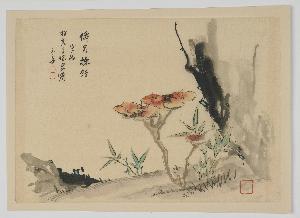Taki Katei
Taki Katei
Place: Edo (Now Tokyo)
Born: 1830
Death: 1901
Biography:
Early Life and Career
Taki Katei, a Japanese painter, was born on January 27, 1830, in the late Tokugawa period. His career spanned two eras, making him an important figure in the transition from traditional to modern Japanese art.
Artistic Style and Influences
Taki Katei's work demonstrates the shifts occurring in artistic practice as Japanese society changed and expectations altered. His style, though rooted in tradition, shows a gradual incorporation of modern techniques. This blending of old and new makes his artwork a fascinating study of Japan's cultural evolution.
Notable Works and Associations
* Taki Katei's paintings are characterized by their use of mineral pigments and organic materials on silk or paper, typical of the Nihonga style. * His work can be seen as a response to the rise of Western-style painting known as Yōga, which was gaining popularity during the Meiji period (1868-1912). * Taki Katei's association with the Nihonga Art Movement places him alongside notable artists like Uemura Shōen, Kazuo Shiraga, and Kobayashi Eitaku.
Legacy and Impact
* Taki Katei's contributions to Japanese art are undeniable. His work serves as a bridge between the traditional Yamato e style and the modern Nihonga movement. * The Taki Katei collection at Wikioo.org showcases his remarkable talent, with 20 artworks available for viewing and reproduction.
Key Artworks and Collections
- Taki Katei's artwork can be found in various collections, including those at the Museo de Arte de São Paulo (Brazil), though this is not confirmed for Taki Katei specifically.
- For a comprehensive guide to Nihonga art and its notable artists, visit The Yamato e Art Movement.
- Explore the Nihonga Art Movement at Wikioo.org's Nihonga Collection, featuring artists like Taki Katei.
Conclusion
Taki Katei, with his unique blend of traditional and modern techniques, remains a pivotal figure in Japanese art history. His work, spanning the late Tokugawa period and Meiji era, offers a captivating glimpse into Japan's artistic evolution.
- View Taki Katei's artworks at Wikioo.org.
- Discover more about the Nihonga Art Movement and its notable artists.
- Explore the Yamato e style and its influence on Japanese art.
This article is based on available information up to 2022. For the most recent updates, please visit Wikioo.org.














